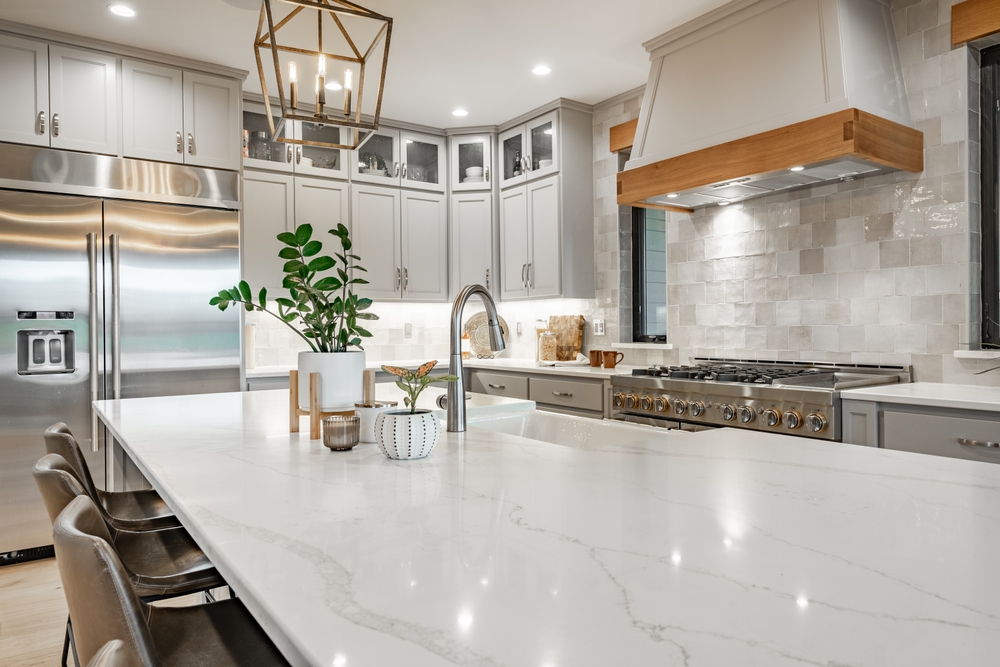Starting a successful countertop fabrication and installation company in Colorado requires a unique blend of creativity, business acumen, and a deep understanding of the industry. Here are the necessary steps you need to take to set up a thriving countertop business in the Centennial State:
Conduct Comprehensive Market Research: To build a successful countertop fabrication and installation company, you need to have a deep understanding of the local market. You should analyze the different types of countertops that are in demand, as well as the target customers for these products. Some of the factors that you should consider include income levels, age groups, location, and lifestyle preferences. Once you have this information, you can create a business plan that outlines your goals and objectives.
Develop a Business Plan: A business plan is the roadmap for your countertop fabrication and installation company. It should outline your business goals, target market, marketing strategies, financial projections, and operational plans. This will help you to create a solid foundation for your business and ensure that you stay on track as you grow.
Register Your Business: Register your countertop fabrication and installation company with the Colorado Secretary of State’s office. This will ensure that you are operating legally and will give you access to the necessary permits and licenses required to run a business in Colorado.
Obtain Licenses and Permits: Starting a countertop fabrication and installation company requires several licenses and permits. You will need a business license from the Colorado Secretary of State’s office, as well as a sales tax license from the Colorado Department of Revenue. Additionally, you will need to obtain zoning permits, building permits, and other regulatory approvals from local authorities.
Establish Your Brand: Your brand is your identity in the market. It is important to create a strong and memorable brand that resonates with your target market. Develop a logo, website, and other marketing materials that are consistent with your brand.
Set Up Your Workshop: Your workshop is the heart of your countertop fabrication and installation company. You will need to purchase equipment such as saws, routers, and polishers, as well as a variety of hand tools. You will also need a space to store and display your finished products.

Invest in High-Quality Equipment: Your success as a countertop fabrication and installation company depends on the quality of your equipment. You should invest in high-quality tools and machinery, including saws, routers, polishers, and other equipment. Additionally, you should consider investing in software that can help you with design, estimating, and project management.
Build Relationships with Suppliers: Building strong relationships with suppliers is critical to the success of your business. You should work with reputable suppliers who can provide you with high-quality materials at competitive prices. You should also look for suppliers who can offer you a wide range of products, including granite, marble, quartz, and other materials.
Build a Strong Team: To build a successful countertop fabrication and installation company, you need to have a strong team of professionals. You should look for individuals who have experience in the industry and a passion for customer service. You will need designers, fabricators, installers, salespeople, and administrative staff to ensure that your operations run smoothly. Make sure that you provide your team with the necessary training and support to help them succeed.
Develop a Marketing Strategy: To build a successful countertop fabrication and installation company, you need to develop a marketing strategy that targets your ideal customers. This may include advertising in local publications, attending trade shows, and using social media to build your brand. You should also consider partnering with local builders, designers, and architects to build your network.
Provide Exceptional Customer Service: Customer service is the key to success in the countertop fabrication and installation industry. You should strive to provide exceptional service to every customer, from the initial consultation to the final installation. Make sure that you listen to your customers’ needs and provide them with solutions that meet their expectations.
Focus on Quality: Quality should be your top priority in every aspect of your business. You should use high-quality materials, invest in skilled labor, and ensure that your finished products meet the highest standards. This will help you to build a strong reputation in the market and earn the trust of your customers.
According to Shane, and Denver countertops pro, starting a successful countertop fabrication and installation company in Colorado is a challenging endeavor, but with the right strategies and mindset, you can achieve great success. Follow these necessary steps and continue to innovate and adapt as the industry evolves. Remember to stay flexible and adaptable, and never stop learning and improving your operations. With hard work, dedication, and a commitment to quality, you can build a thriving business that will stand the test of time.









